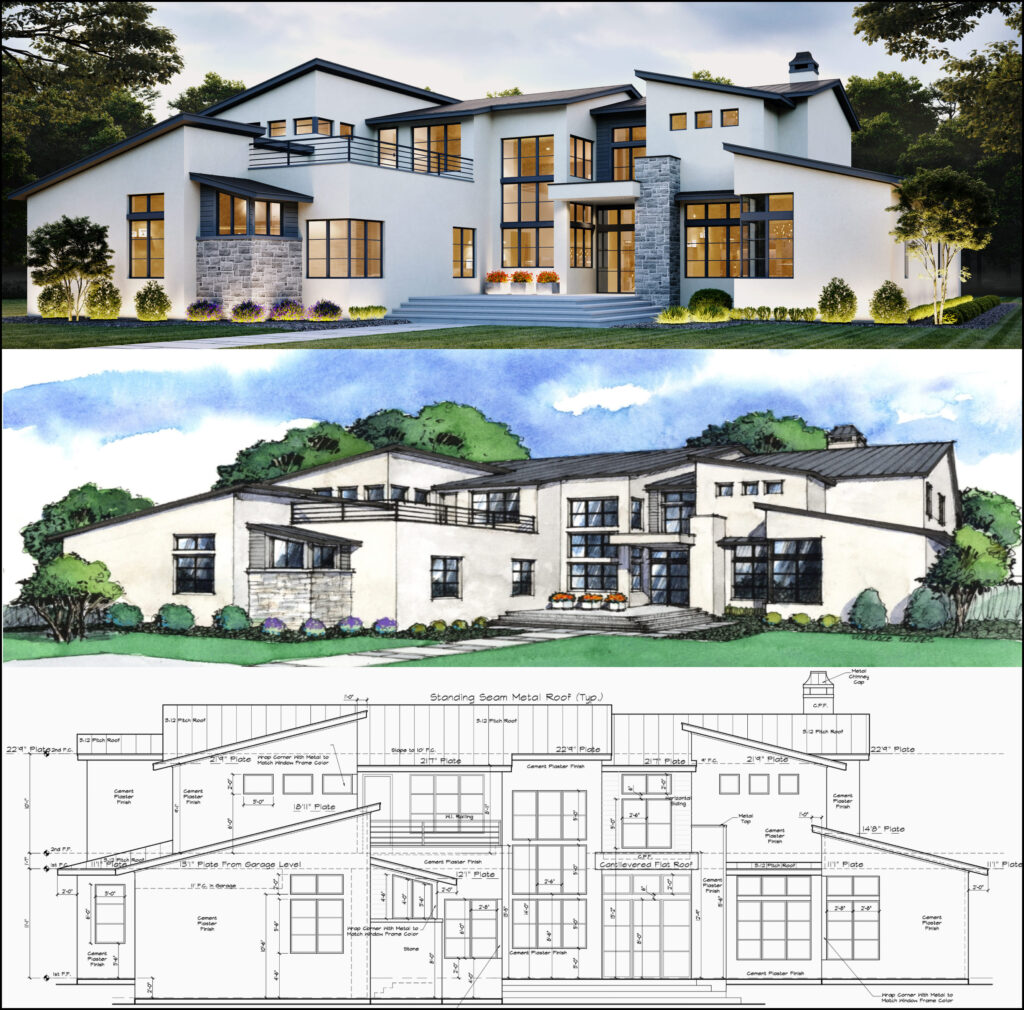Just How CDA Architects Integrate Eco-Friendly Practices in Architectural Projects
Just How CDA Architects Integrate Eco-Friendly Practices in Architectural Projects
Blog Article
The Essential Role of an Engineer fit Sustainable Urban Settings for Future Generations
The role of an architect in crafting lasting city atmospheres is progressively critical in responding to the obstacles of environment modification and urbanization. By perfectly integrating eco-friendly concepts into their layouts, designers not only boost the visual and functional quality of city areas but also address pushing problems such as energy performance and social equity.
Comprehending Lasting Urban Style
Sustainable city style incorporates environmental principles with city planning to develop atmospheres that are not just habitable however likewise resilient. This strategy emphasizes the relevance of integrating natural systems right into the metropolitan textile, making sure that development fulfills the needs of today without jeopardizing the capacity of future generations to satisfy their own demands. Secret components of sustainable urban style include reliable land use, the promotion of biodiversity, and the combination of eco-friendly areas, all of which contribute to boosted quality of life for locals.
In addition, lasting city layout prioritizes the reduction of the urban warmth island impact, boosted air top quality, and effective stormwater monitoring. It urges using eco-friendly resources and energy-efficient structure practices, which substantially lower carbon impacts. Furthermore, sustainable metropolitan design fosters social equity by producing available public areas and advertising mixed-use developments that accommodate diverse populations.
Via thoughtful preparation and cutting-edge style techniques, lasting city atmospheres can enhance area strength versus climate adjustment while fostering financial development. This all natural approach not only addresses immediate metropolitan challenges but likewise prepares for much healthier, a lot more lasting cities for generations to come.
Key Responsibilities of Architects
Architects play an essential function fit lasting metropolitan settings by translating style concepts right into concrete structures and areas. Their obligations incorporate a large array of tasks that add to the total success of metropolitan style tasks.
Primarily, designers perform complete website analyses to recognize the environmental, social, and social context of their tasks. This fundamental understanding educates their design choices, making certain that buildings harmonize with their surroundings. They additionally engage in joint processes with stakeholders, consisting of city organizers, engineers, and the community, promoting a comprehensive approach to city growth.
Additionally, engineers are entrusted with creating styles that enhance power performance, source conservation, and capability. They have to abide by local zoning laws, developing codes, and sustainability certifications, ensuring compliance while pressing the borders of advancement.
Additionally, engineers are in charge of handling the layout process, coordinating with different professionals throughout the building stage to make certain that the vision is recognized properly (cda architects). Ultimately, their duty is not exclusively about aesthetic appeals; it has to do with creating resilient, adaptive rooms that browse this site improve the quality of life for current and future generations, laying the foundation for sustainable metropolitan living
Cutting-edge Materials and Techniques

Additionally, developments in modern technology have actually resulted in the advancement of high-performance products, such as shielded concrete forms (ICFs) and solar glass, which add to power conservation and harness renewable resource. Techniques such as easy solar style and green roof coverings additionally exemplify just how architecture can integrate with natural systems, lowering reliance on man-made heating & cooling.
Additionally, the integration of wise materials, which adjust to environmental modifications, offers appealing avenues for enhancing structure performance. These products can react to temperature variations or wetness degrees, optimizing comfort and sustainability.
Inevitably, the tactical option and application of innovative materials and strategies empower designers to develop urban areas that are not just functional and visually pleasing yet also durable and eco responsible, making sure click resources a lasting future for generations to come. cda architects.
Neighborhood Engagement and Partnership
The success of cutting-edge products and strategies in lasting city style is significantly boosted by energetic neighborhood engagement and collaboration. Engineers need to acknowledge that the built environment greatly influences the lives of regional citizens, making it vital to include them in the design procedure. Engaging the community fosters a feeling of ownership and responsibility, guaranteeing that advancements not just fulfill aesthetic and practical needs yet likewise reflect the worths and goals of those that occupy them.

Successful community interaction additionally aids in focusing on social equity within city development. By considering the voices of marginalized populations, architects can create spaces that are find out inclusive and equitable. By doing this, community engagement and partnership end up being important to accomplishing genuinely lasting city settings that offer the demands of existing and future generations.
Future Fads in Lasting Design
An emerging concentrate on adaptive reuse and circular economy principles is readied to redefine the landscape of sustainable architecture. As cities grapple with raising populace densities and ecological obstacles, engineers are significantly turning to strategies that enhance existing structures instead of seeking new builds. This approach not just maintains social heritage however additionally dramatically lowers resource consumption and waste.
In addition, innovations in innovation are shaping future fads in lasting architecture. The assimilation of clever products and structure systems allows for real-time power administration, enhancing performance and minimizing carbon impacts. Advancements such as green roof coverings, living walls, and energy-generating facades are ending up being basic practices, additionally promoting environmental balance within metropolitan environments.
Additionally, a shift in the direction of biophilic design is getting traction, highlighting the connection between nature and human health. By integrating natural environments, engineers create areas that cultivate mental wellness while promoting biodiversity.
Final Thought
In conclusion, designers are crucial in advancing lasting metropolitan settings with their competence in design, ingenious materials, and area interaction. By focusing on power effectiveness and source preservation, these professionals add to the creation of durable metropolitan spaces that meet the demands of present and future generations. The integration of environmental concepts not only enhances livability but also fosters social equity, guaranteeing growths resonate with the worths and goals of the areas they offer.
Report this page